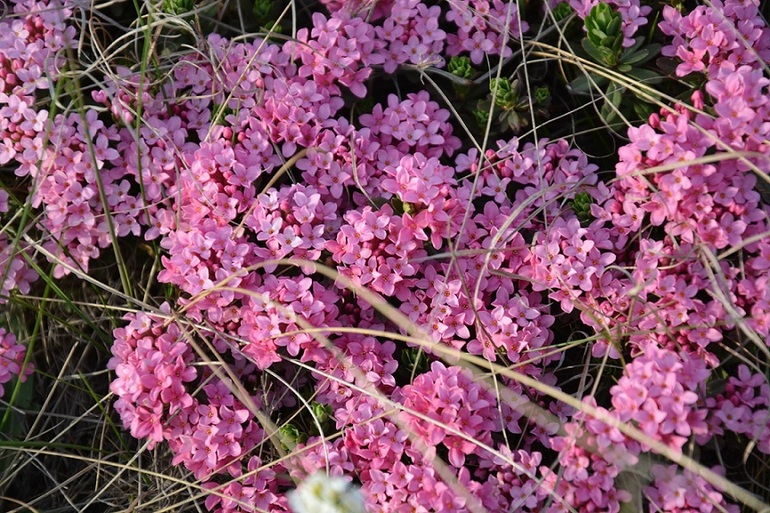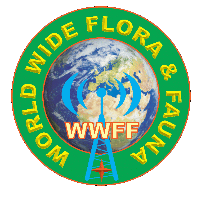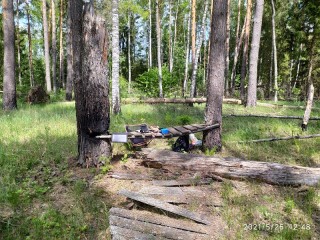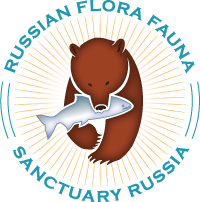New RFF references are added to our RFF Directory:
- St. Petersburg City — 4 references;
- Stavropolskiy Krai — 19 references;
- Yevreyskaya autonomous oblast — 8 references;
- Ivanovskaya oblast — 12 references;
- Kaliningradskaya oblast — 5 references;
- Kirovskaya oblast — 3 references;
- Kurganskaya oblast — 15 references;
- Kurskaya oblast — 4 references.
The current task-minimum for the growing of the RFF Directory is to have at least 5 valid RFF references in each of 85 Entities of the Russian Federation (RF Entity). Those, who considered the Rules of the “Sanctuary Russia” award might have noticed — there are catastrophically few, 3 or less, valid RFF references in more than half of the RF Entities, and two RF Entities have even none RFF reference.
Now we have begun to correct this abnormal situation and have already added 70 new RFF references to the RFF Directory for the first 8 RF Entities, which had none or only one RFF reference.
Despite the fact that there are more than enough existing Specially Protected Natural Area (SPNA) in our country to solve this problem, it turns out to be not so easily to accomplish the task. Current edition of the WWFF Rules requires that SPNAs assigned with a reference should be present at the World Database on Protected Areas (WDPA), which is a joint project between UN Environment and the International Union for Conservation of Nature (IUCN). To put it mildly, the WDPA consists information, less than half relevant and correct for our country — a lot of erroneous or outdated data, does not take into account the huge amount of protected areas in Russia, and so on. And for those few SPNAs that can still be found in the WDPA, it is not always possible to find a reliable map of the territory:
- maps available in WDPA, do not correspond to reality in most cases. In general, we can not rely on them;
- Information Analytic System “SPNAs of the Russian Federation” (IAS “SPNAs of RF”) contains the most relevant and reliable information about all Russian SPNAs, which we focus on in the first turn. But we can often find only the most plain information about the protected areas without parameters, descriptions and maps even there. And it is inconvenient to use maps there due to noticeable interruptions associated with restrictions recently introduced by the Google Maps service.
SPNAs of regional and local significance, being the main resource for growing of the RFF Directory, are managed by separate SPNA Directorates in each RF Entity or even by local Municipalities. The situation is simply depressing in some of our RF Entities, I am not even sure if those Directorates themselves have enough information about SPNAs managed by them, not to mention its providing to the IAS “SPNAs of RF”. In many cases, each “candidate” for a reference assigning requires our additional investigation.
Next in this article and its subsequent continuations we will give a summary of the references added.
Directorates in some separate RF Entities look great, like bright stars on a general dull not so joyful backgroung. For example, it is GKU "Directorate of specially protected natural areas of St. Petersburg". St. Petersburg city (R1A) is the very first RF Entity where it is necessary to register at least some RFF references, because there have been none of them until today!
WDPA does not difference between the city of St. Petersburg and the Leningradskaya oblast, and contains in total 42 entries on the SPNAs of all statuses, despite the fact that the city has 46, and the oblast has 170 SPNAs of all statuses (acting, liquidated, lost, reorganized or prospective SPNAs of different signification).
It was found only 4 of 15 acting protected areas of St. Petersburg in the WDPA. All of them have been assigned RFF references, and there is comprehensive information for them. It feels that the people of this city concern their work not only in good faith, but also with love. I RECOMMEND: http://oopt.spb.ru/ — perhaps the best SPNA Directorate website of all that I have seen. The Info on the territories are perfectly prepared, there are excellent photos, detailed maps, booklets, etc. Four fine videos are made for five protected areas, you can easily find links to them on the site.
Stavropolskiy Krai (R6H)
is the second RF Entity, where there was no one RFF reference. There are a total of 26 entries in the WDPA, 19 of them correspond to some of the 112 acting SPNAs. In total, there are 159 SPNAs of different status (see above) in this RF Entity. It should be noted that all entries of Stavropol's SPNAs in the IAS “SPNAs of RF” are provided with sufficiently detailed maps, and many entries even contain the exact coordinates of the territory borders. All of them included to the RFF Directory are Natural Reserves (IUCN IV Cat.) with a fairly large area. It is noteworthy there are two different Natural Reserves with the same name — “Solenoe ozero (Briny Lake)” in two different districts of the Stapropolskiy Krai. We additionally assigned them numbers — I and II.
Next RF Entities had the only RFF reference each, as a rule, these were the SPNAs of federal significance — Nature Reserves (IUCN I Cat.) or National Parks (IUCN II Cat.).
Yevreyskaya autonomous oblast (R0D)
has got RFF references for 5 Natural Reserves and 3 Nature Monuments. Territories, as a rule, are vast, and, in our opinion, there are no hard-to-reach ones.
Ivanovskaya oblast (R3U)
requires topographic maps with quarter numbers to locate the boundaries of a few suitable SPNAs. There are no maps even at the IAS “SPNAs of RF” in most cases! There are very large number of tiny protected areas such as “a tree, pond, stone, square, rural park”. Probably, assigning the status of the protected area to a pond or a couple of trees on the village outskirts, people simply wanted to keep them from inevitable destruction. Well, they managed it! However, these SPNAs are inconvenient for our purposes — a tiny area, the lack of clear boundaries and/or surrounding security zone in whole, populous areas, an uncertain attitude to wildlife conservation. We managed to select 12 SPNAs having maps and are present in the WDPA. In total, 789 SPNAs are known in the Ivanovskaya oblast, including lost, liquidated, reorganized ones, etc.
Kaliningradskaya oblast (R2F)
is represented in the WDPA by 68 territories, where is one National Park (already RFF-0126), 5 areas are not suitable for us, 1 area needs more clarification, 4 areas are lost in various years from 1998 to 2009 (but still considered as acting in the WDPA), 5 areas are suitable for us, and... 52 (!) — we could not find them among the protected areas of any status at all, they are fakes! Taking into account that the Kaliningradskaya oblast has 56 acting SPNAs, and there are only 12 of them in the WDPA, it turns out that the WDPA contains 56 (or 82%) “junk” entries and does not count 44 of 56 (78%) SPNAs, actually existing in the region. This is a typical situation for the WDPA relative to Russia.
Kirovskaya oblast (R4N)
has no PAs maps or boundary descriptions. In some cases, there are coordinates of a point on area, or maps are completely off the wall, or indications that the SPNAs is located in such and such quarter of such and such rural settlement or Forestry. I am not sure if we can cope with this area without local assistance. It barely managed to find THREE SPNA with reliable boundaries on a map. Given that there are 168 entries in the WDPA, and 274 SPNAs in the IAS “SPNA of RF”.
Kurganskaya oblast (R9Q)
has good maps for, at least, Natural Reserves (IUCN IV Cat.). An “SPNA book” (in Russian) is available. The WDPA has entries for 15 of the existing 21 Natural Reserves in each district of the oblast. All Natural Reserves are well described and easy to reach. We assigned RFF references to only the already mentioned 15 Natural Reserves at this stage, if necessary, we will deal with the rest later.
Kurskaya oblast (R3W)
has 20 acting SPNAs, but only 4 Natural Monuments are suitable for us. And 9 Natural Reserves mentioned in the WDPA are lost SPNAs of municipal significance and, at the same time, exactly they are prospective (planned) protected areas of regional significance. There are constitutive documents having the coordinates of the boundaries for each of “our” territories.
The pearl of the Kurskaya oblast is Pink Valley Tract (new RFF-0622) is the only place in the World where the relict plant of the preglacial age grows — Daphne Julia. Several hectares on the chalky slopes in the valley of the small river with the tender name “Apochka” are covered with a pink flowers carpet of this rare plant every spring.

Thus, we have now added 70 new RFF references in 8 Entities of the Russian Federation. We still have 8 Entities with 1 RFF reference each, 14 Entities with two RFF references, 14 with three and 10 with four RFF references.
Stay tuned for further updates in our RFF Directory.







